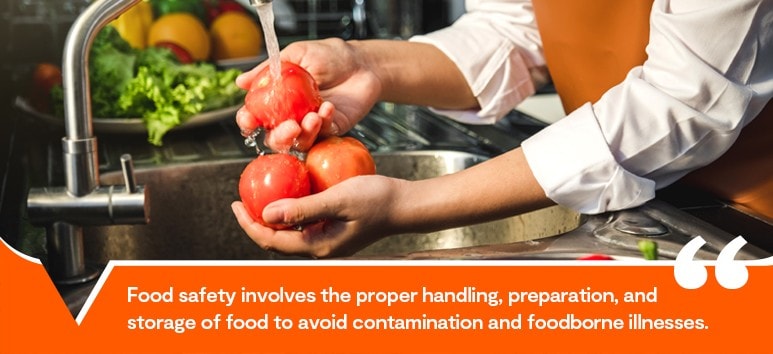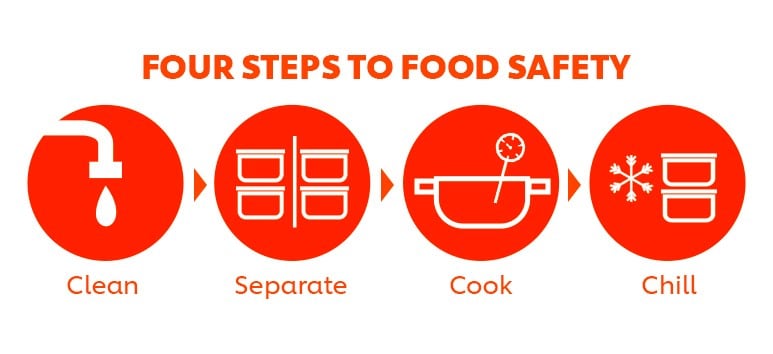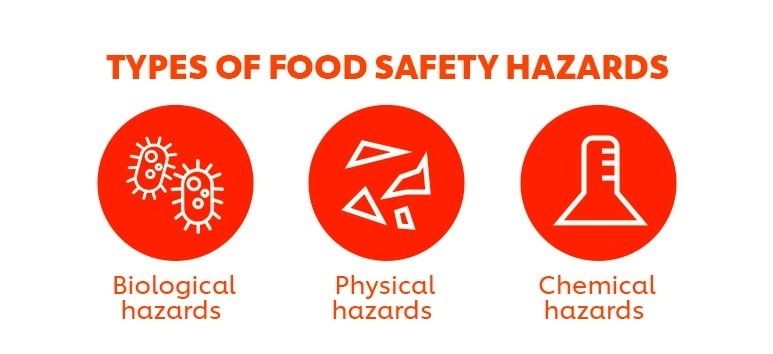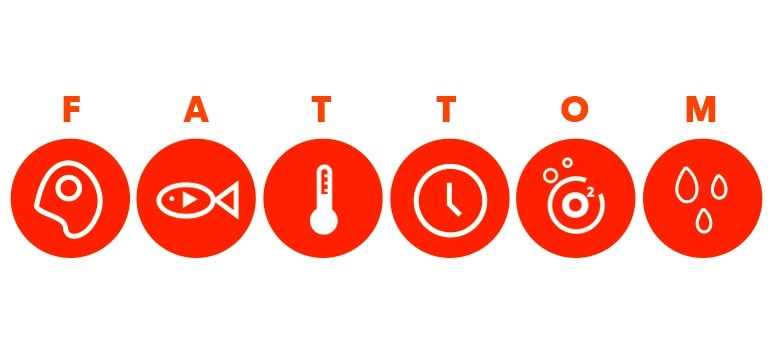Food safety is a critical concern for every food establishment. If diners contract a foodborne illness from your restaurant, they’ll not only avoid returning but may also spread negative word of mouth. Beyond customer dissatisfaction, food safety lapses can lead to serious legal consequences, hefty fines, and even business closure.
Global statistics highlight the alarming impact of subpar food safety practices. According to the World Health Organization (WHO), an estimated 600 million people – almost 1 in 10 worldwide – fall ill after eating contaminated food each year, resulting in 420,000 deaths. Children under five years old bear 40% of this burden, with 125,000 fatalities annually.
Now more than ever, the importance of food safety cannot be ignored. Read on for a clear food safety meaning, plus essential practices to protect your customers, uphold your reputation, and ensure business longevity.
What Is Food Safety?

Food safety refers to the proper handling, preparation, and storage of food to prevent contamination and reduce the risk of foodborne illnesses. It involves strict hygiene measures and best practices to minimize exposure to harmful bacteria, viruses, and other food safety hazards that can compromise food quality and consumer health.
The WHO emphasizes how unsafe food contributes to disease outbreaks and economic losses worldwide. Ensuring food safety requires vigilance at every stage of the supply chain, from production and processing to distribution and preparation. Ultimately, preventing contamination from biological, chemical, and physical hazards is a shared responsibility among food producers, entrepreneurs, and consumers.
Why Food Safety Is Important
Food safety is a fundamental pillar of the F&B industry, safeguarding public health and ensuring a thriving business environment. Proper food handling and hygiene practices help achieve the following:
- Prevents foodborne illnesses: Contaminated food can cause serious health issues, including infections and poisoning.
- Protects your reputation: A single incident can quickly go viral on social media, leading to negative publicity, customer distrust, and declining sales.
- Ensures regulatory compliance: The government enforces food safety laws, and failing to comply can result in penalties.
- Reduces food waste and costs: Proper food handling and storage prevent spoilage and unnecessary expenses.
- Enhances operational efficiency: Organized food safety practices streamline kitchen operations and improve productivity.
- Encourages consumer confidence: Diners are more likely to return to a restaurant known for its commitment to hygiene and safety.
- Improves staff safety and knowledge: Training employees in food safety practices reduces workplace accidents and ensures a knowledgeable, responsible team.
- Boosts the economy: Safe food practices support jobs, trade, and a stable food supply.
Steps to Food Safety

According to the US Department of Health & Human Services, there are four key steps to food safety:
- Clean: Wash hands, utensils, and surfaces often to prevent the spread of bacteria.
- Separate: Keep raw meat, poultry, seafood, and eggs separate from ready-to-eat foods and packaged products like Lady’s Choice Real Mayonnaise to avoid cross-contamination.
- Cook: Use a food thermometer to ensure food reaches safe internal temperatures, killing harmful bacteria.
- Chill: Refrigerate perishable foods within two hours to slow bacterial growth and keep food safe.
Following these four steps helps reduce food safety hazards and ensures a safer dining experience for customers.
Types of Foodborne Illnesses

Foodborne illnesses are diseases caused by microorganisms transmitted to humans through contaminated food or water. It’s considered an outbreak when two or more people experience the same illness after consuming the same contaminated food. These illnesses can range from mild discomfort to severe conditions that require hospitalization.
There are three major types:
- Foodborne infections – Caused by bacteria, viruses, or parasites in contaminated food.
- Foodborne intoxications – Caused by eating food that contains toxins produced by bacteria, chemicals, feces, and other contaminants.
- Toxin-mediated infections – Caused by microbes that release toxins after the food is consumed.
Types of Food Safety Hazards

Biological hazards
These occur when bacteria, viruses, fungi, or parasites contaminate food. Such microorganisms thrive in improperly handled food and can cause foodborne illnesses. Proper storage, thorough cooking, and maintaining hygiene during food preparation help minimize the risk of biological hazards.
Physical hazards
Such hazards involve foreign objects like hair, metal fragments, plastic, or dirt that accidentally enter food. These contaminants can cause injuries, choking, or other health risks. Implementing strict hygiene practices, inspecting ingredients, and using proper food handling procedures help prevent physical hazards.
Chemical hazards
These hazards arise from exposure to toxic substances such as pesticides, cleaning agents, and heavy metals. If not stored properly, these chemicals can contaminate food and pose serious health risks. Keeping chemicals away from food preparation areas and using approved food-safe materials help mitigate chemical hazards.
Understanding FATTOM: Key Factors for Microbial Growth

FATTOM is an acronym for six factors that contribute to microbial growth. This guide helps food industry professionals understand and control conditions that promote bacterial proliferation. By managing these effectively, you can reduce hazards and ensure food safety.
- Food: Protein-rich foods like meat and dairy are more prone to contamination.
- Acid: Low-acid foods (poultry, fish, eggs) require proper handling to prevent bacteria growth.
- Temperature: Keep food out of the 5° to 56.7°C range to slow bacterial growth.
- Time: Do not leave food in the temperature danger zone for more than four hours.
- Oxygen: Some bacteria thrive in oxygen-rich environments; proper packaging helps mitigate risks.
- Moisture: High moisture levels promote bacterial growth. Keep food dry and stored properly.
Putting premium on the importance of food safety prevents illnesses, protects public health, and strengthens business success. Your next task is to identify hazards, implement audits, and ensure compliance to maintain customer trust. Stay informed about risks and take proactive steps to uphold the highest standards in your kitchen.